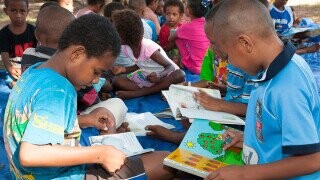How Papua New Guinea Became Home To Over 850 Languages

There are 7,139 languages spoken in the world today, and an inordinate percentage of them are spoken in a single country.
Papua New Guinea is an island nation north of Australia with a population of more than 9,100,000 people. It is recognized for its cultural diversity, as most of its population lives in traditional indigenous communities. A result of this is that there are more than 850 active languages in Papua New Guinea today.
The earliest family of languages in the country, the Papua family, emerged roughly 40,000 years ago. The key to this language diversity is the isolationist tendencies of the tribes within Papua New Guinea. Tribes often never made contact with one another, so each different language had little risk of merging with other languages or being replaced.
Don't Miss
This changed with the arrival of Europeans in the 19th century. They introduced the people of Papua New Guinea to English and other European languages. The combination of English and native languages has resulted in a form of pidgin called Tok Pisin, which is the most common language in the country. Speaking Tok Pisin and English can help a young Papua New Guinean find more opportunities outside of their village.
However, the downside to this is that with more people speaking Tok Pisin or English, many of the indigenous languages are in danger. A study of indigenous languages in Papua New Guinea found that only 58% of students could speak an indigenous language. Meanwhile, 91% of their parents were fluent in their native tongue. If this pace continues, many of these languages are at risk. Some of Papua New Guinea’s languages are already in vulnerable places with fewer than 100 known speakers.
Linguists have turned their efforts to preserving these endangered languages. Each language represents a piece of culture that could not be replaced if every speaker dies out. To help keep these languages alive, linguists have worked with indigenous Papua New Guineans to create dictionaries and grammatical guides. Technology is used to record the language, meaning that even if the last known speaker of a language dies, evidence of the tongue still exists.
While this can help keep a language from dying, teaching indigenous languages in Papua New Guinea schools can truly keep the languages alive. One solution that has proven effective thus far is implementing indigenous language education in schools. Students are taught in both English and their native language, and this allows them to connect with their culture and prepare them for opportunities outside of their villages if they want.
Top Image: Ness Kerson/madNESS Photography for AusAID